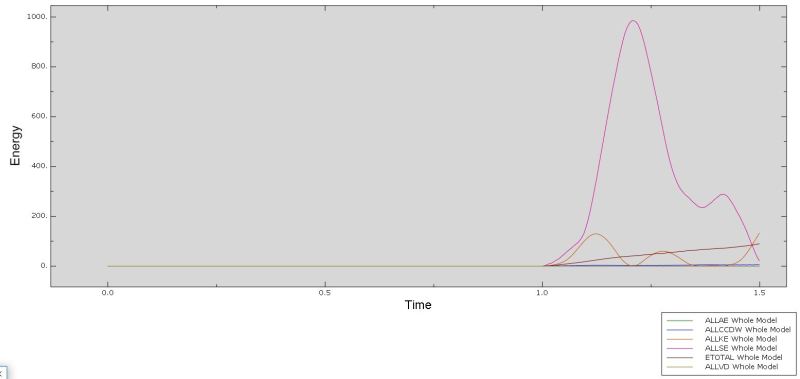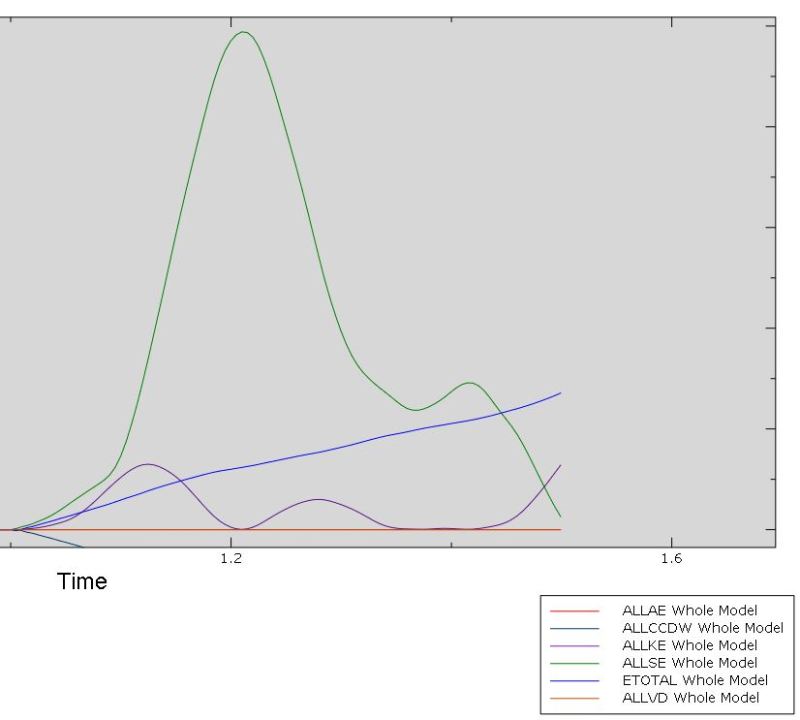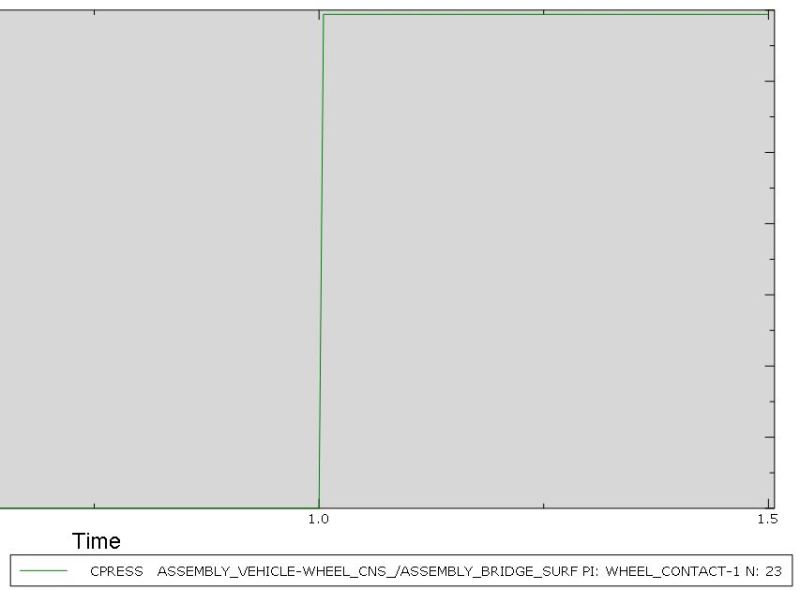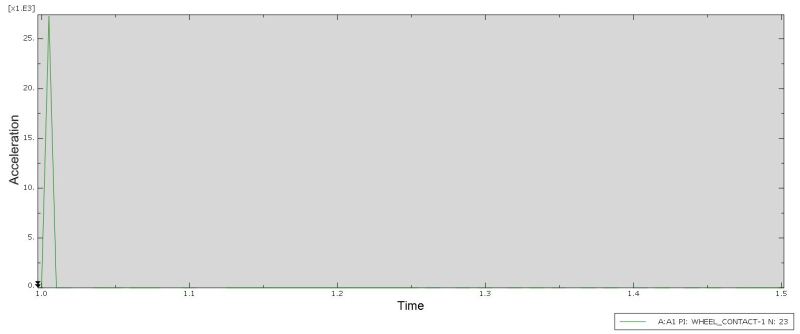-
1
- #1
Hello!
I am doing a simple model: a moving load along a simply supported beam as depicted in the figure below
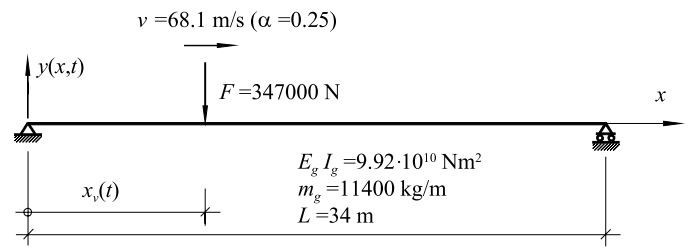
Basically, I've modeled the moving load as a load applied at a reference point and then used a boundary conditions in order to move it.

The model works. The problem is that I doesn't have a satisifed result.
In the figure below is possible to see that the result obtained with ABAQUS (DYNAMIC ABAQUS) is different from the one that I expect (DYNAMIC EXACT).
The Figure shows the displacement observed from the mid-span point of the beam versus vehicle position. (at t=0 the load is at the left-point (x=0 meter) and at the
end of the analysis the load is at the right-point (x=34 meter).
It seems that, at the end of the analysis (when the load reached the right end of the beam) the displacement is not zero (but it should be of course).
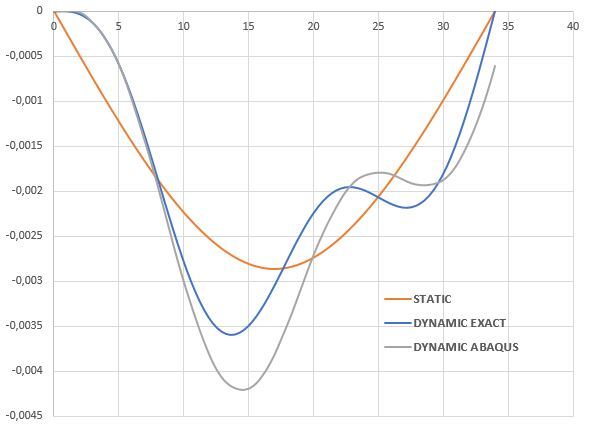
What do you think is the problem?
I can share the script file if you need.
Thanks in advance
I am doing a simple model: a moving load along a simply supported beam as depicted in the figure below

Basically, I've modeled the moving load as a load applied at a reference point and then used a boundary conditions in order to move it.

The model works. The problem is that I doesn't have a satisifed result.
In the figure below is possible to see that the result obtained with ABAQUS (DYNAMIC ABAQUS) is different from the one that I expect (DYNAMIC EXACT).
The Figure shows the displacement observed from the mid-span point of the beam versus vehicle position. (at t=0 the load is at the left-point (x=0 meter) and at the
end of the analysis the load is at the right-point (x=34 meter).
It seems that, at the end of the analysis (when the load reached the right end of the beam) the displacement is not zero (but it should be of course).

What do you think is the problem?
I can share the script file if you need.
Thanks in advance

